Desi Arnaz: ‘I Love Lucy’ Biographer Remembers ‘The Prince of Cuba’ (EXCLUSIVE)
Expert Geoffrey Mark reveals the real Arnaz and how he helped change television history
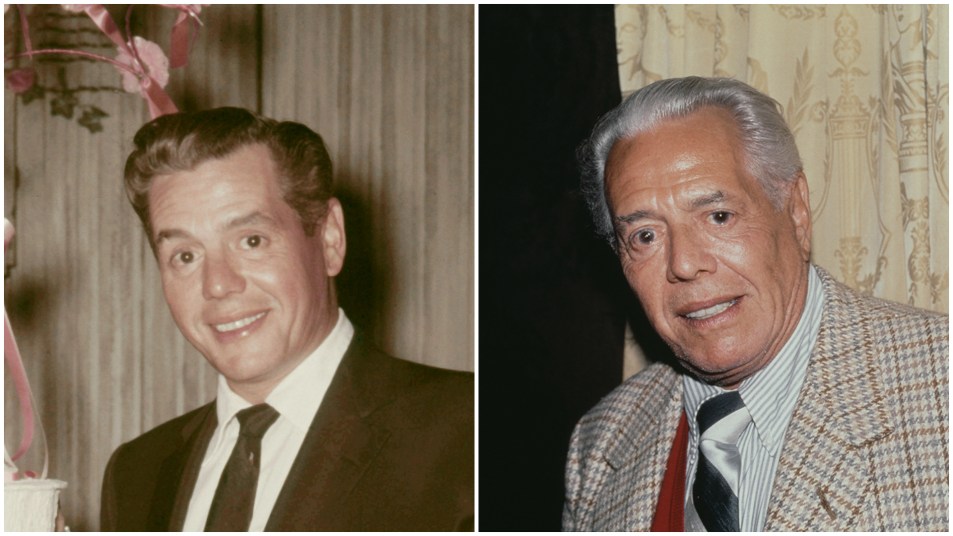
There is no doubt that Lucille Ball gets the lion’s share of credit for classic TV show I Love Lucy — and deservedly so — but you cannot underestimate the contributions of co-stars Vivian Vance, William Frawley and, of course, her husband, Desi Arnaz. But what sometimes gets forgotten over the passage of time is that Desi Arnaz was much more than Ricky Ricardo to Lucille’s Lucy.
In addition to his on-screen role, he was one of the creative guiding forces behind-the-scenes of the 1951 to 1957 series. With the help of other creatives, he developed and launched the idea of a three-camera sitcom, shot like a play in front of a live studio audience and paving the way for countless sitcoms to come. When he and Lucille had the hard choice to more or less give up their careers to be solely devoted to their growing family, they decided to go for broke by purchasing and opening their own studio, which, as Desilu, became one of the most successful television production facilities of the time.
There is much more to know, which is revealed in this interview with author Geoffrey Mark, who wrote the definitive tome on Lucille Ball’s TV career, The Lucy Book: A Complete Guide to Her Five Decades on Television, which is currently being updated.
Begin with the fact that Desi Arnaz was born Desiderio Alberto Arnaz y de Acha III on March 2, 1917 in Santiago de Cuba, Cuba, and continue from there.
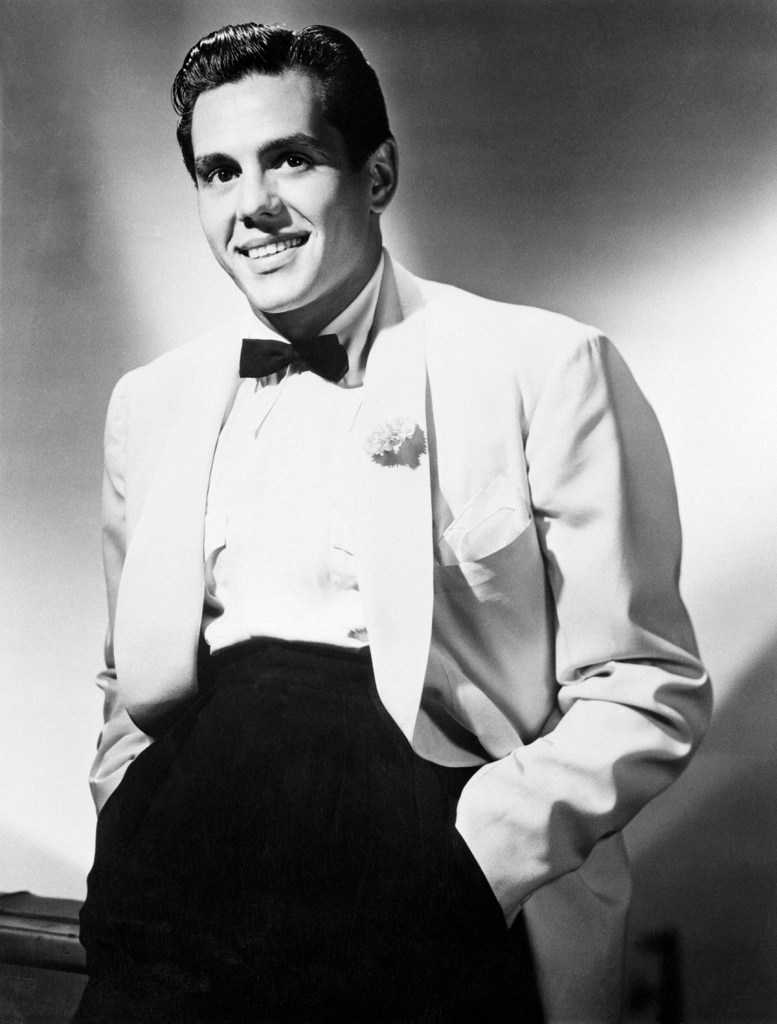
WOMAN’S WORLD (WW): Let’s start with this — how would you describe Desi Arnaz?
GEOFFREY MARK: The Prince of Cuba! Most people don’t know this, but Desi was born into incredibly good circumstances. His grandfather went up San Juan Hill with Teddy Roosevelt and was high in Cuban politics. His maternal grandfather was one of the co-founders of the Bacardi rum industry. His father was the first mayor of their town — Santiago de Cuba is where he was born. His uncle was the chief of police of the town, and then his father went into larger politics on the island of Cuba.
Havana was the political center of Cuba back then, and Santiago de Cuba was the cultural center of the island. It’s where the music came from and all the arts centered there, not that there weren’t night clubs and things in Havana for the tourists. But on the island, if you were creative, if you were an artist, a musician, a singer, a painter, a writer, you probably spent more time in Santiago.
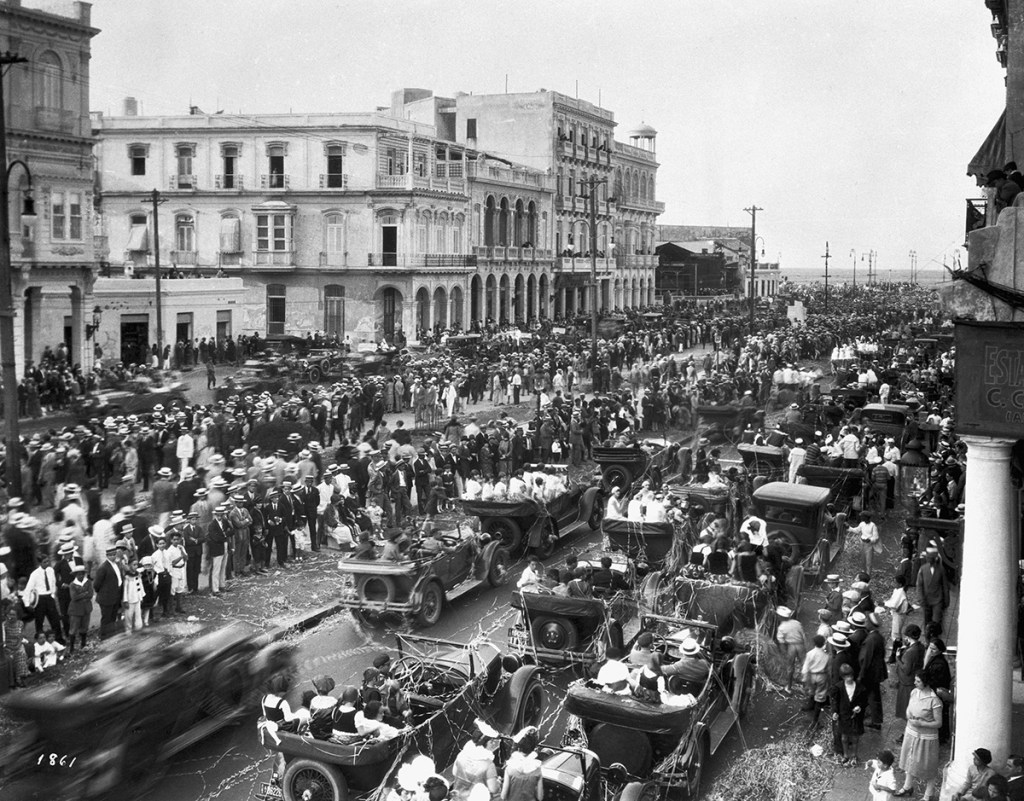
WW: Hearing that, it doesn’t seem like the sort of lifestyle that would compel you to seek a career elsewhere.
GEOFFREY MARK: His family name had worth long before he ever came to this country or learned to speak a word of English, and he was being groomed for the future. It was assumed that he would go to college, to Notre Dame, and then go back to Cuba and take his place in politics as the next mayor, the next governor or the next what have you. He was also an only child, which was rare in Catholic families of those days, so he was completely doted on. His father, Dr. Arnaz, was called the model mayor and the people loved him.
WW: His family was terribly impacted by the Cuban Revolution of 1933, wasn’t it?
GEOFFREY MARK: Desi was 16 and the family was wiped out in that their homes were burned down, their livestock were slaughtered, their ships were sunk, and the only way Desi was able to get out of where he was without being killed was to have someone drive him. In those days, cars had running boards and he would shout, ‘Viva la revolution,’ so that no one would shoot him. Very luckily, Desi, his mother and father didn’t get killed, but they lost everything. So Desi and his father managed to get out of Cuba and went to Miami.
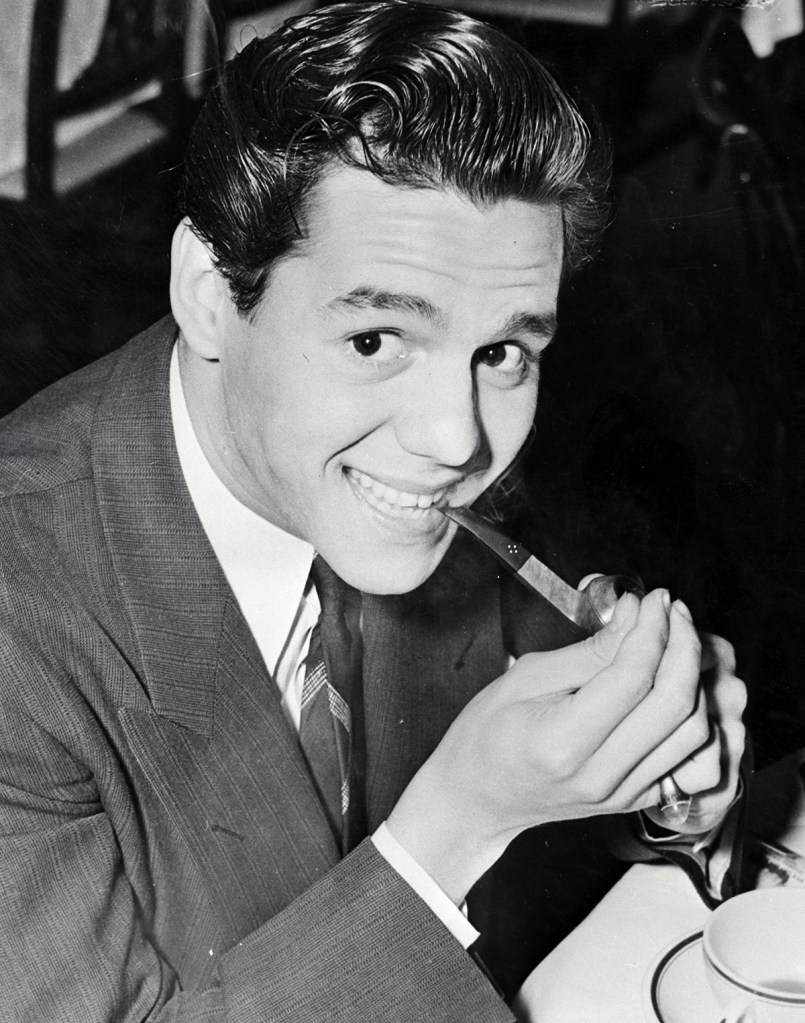
WW: What, if anything, was waiting for them there?
GEOFFREY MARK: With the help of some people who were already in Florida, who were Cuban refugees, they were put into a warehouse where they lived with rats and roaches. That was their new home, from mansions they went to rats and roaches. Eventually his mother came, but his parents’ marriage did not survive the trauma and they divorced.
Desi’s first job in America was going to all the Woolworths in Miami and cleaning the canary cages. Then he and his father went into the tile business — at the same time Desi was going to high school to finish at least his high school education. At one point when they were doing tiles, their shipment of tiles broke and Desi figured out that they’d sell it as a luxury product — ‘Broken tiles done in a mosaic is the new fashion.’ That was the first of the indications that Desi Arnaz was brilliant and could turn lemons into lemonades.
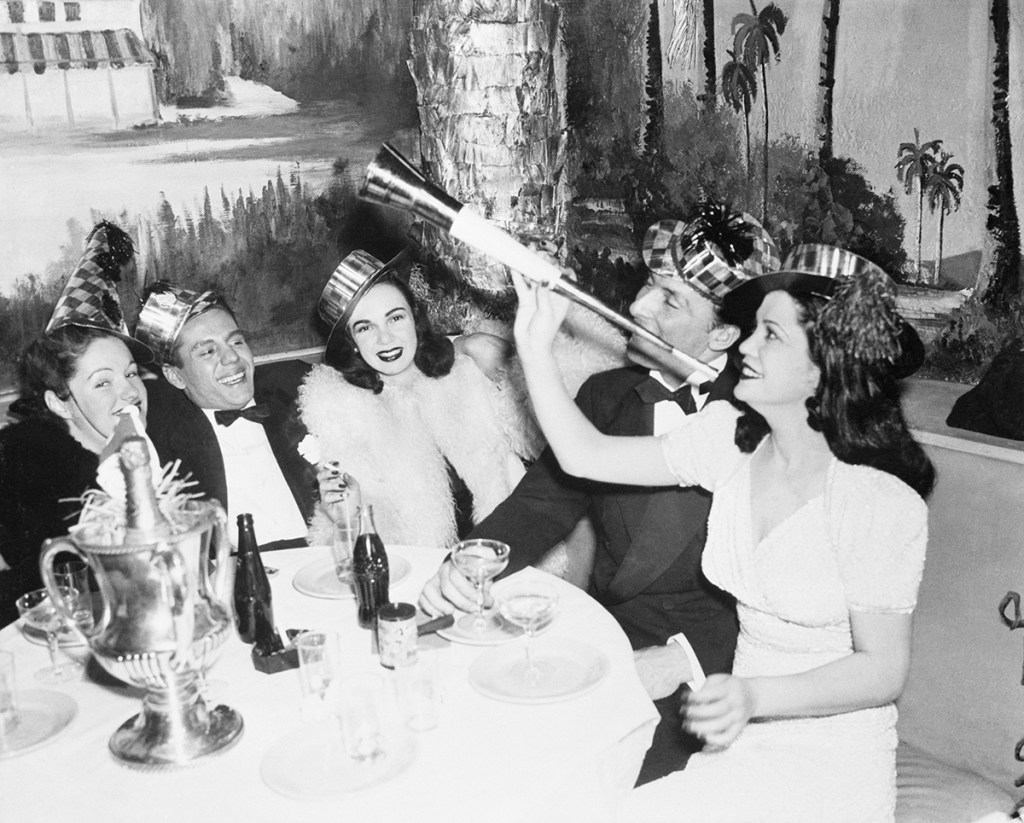
WW: There’s still a large leap from that to a career in entertainment, isn’t there?
GEOFFREY MARK: He was a natural with a guitar and made it clear he could sing. Once he finished high school, he started a group called the Siboney Septet, which was comprised mostly of Jewish boys. The truth is, there weren’t enough qualified Latino musicians in Florida at the time. He began to make a small name for himself as a performer. Xavier Cugat, a Cuban musician and bandleader, saw him and asked him to join his organization. Desi began to tour with Cugat playing the conga drum and singing. And he stood out, because of his incredible good looks, showmanship and sex appeal. Before Tom Jones, before Elvis Presley, their direct ancestor is Desi Arnaz, who used to dance swiveling his hips, showing off what he had and making the girls swoon.
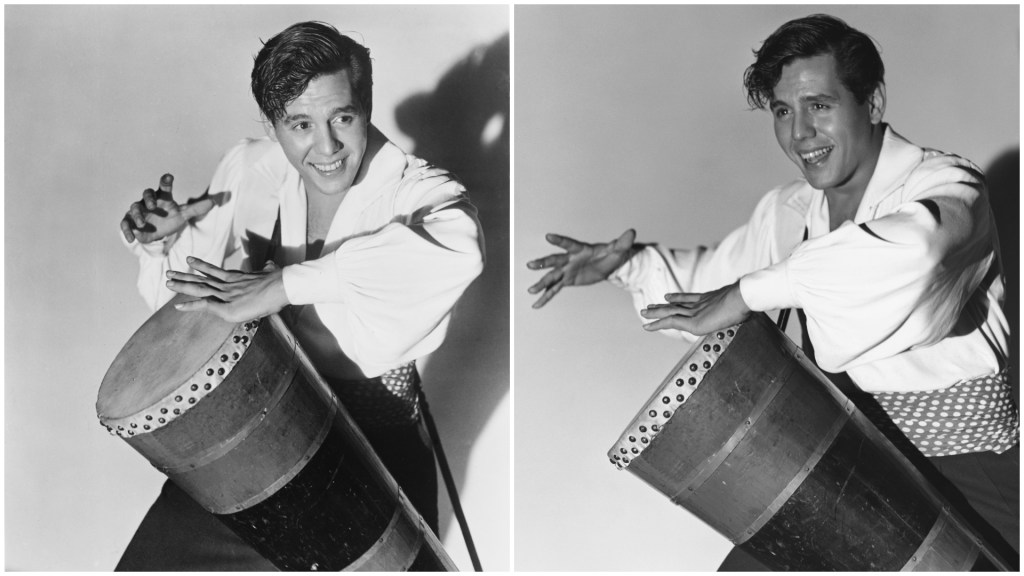
WW: Which no one would have ever considered when you think of Desi Arnaz, I Love Lucy being so entrenched in our minds after all of these years.
GEOFFREY MARK: It’s true — Elvis took it from Desi and Tom Jones took it from Desi. Desi also brought Cuban music to this country; the Cuban music he remembered from Carnivale in Santiago de Cuba. And during the time he worked for Cugat, Bing Crosby came to see them, sat down with Desi and asked him how much he was making. Desi told him and Bing said, “That’s ridiculous. You deserve a raise and you should be featured. First Bing Crosby negotiated for him to get a raise and be featured, and then Desi, tired of being what he felt was a flunky, did his own negotiations with Cugat. Cugat loved him and told him he could start his own organization and call it the Desi Arnaz Orchestra, Straight from the Xavier Cugat Orchestra. That allowed him to use his Cugat’s name to promote himself.
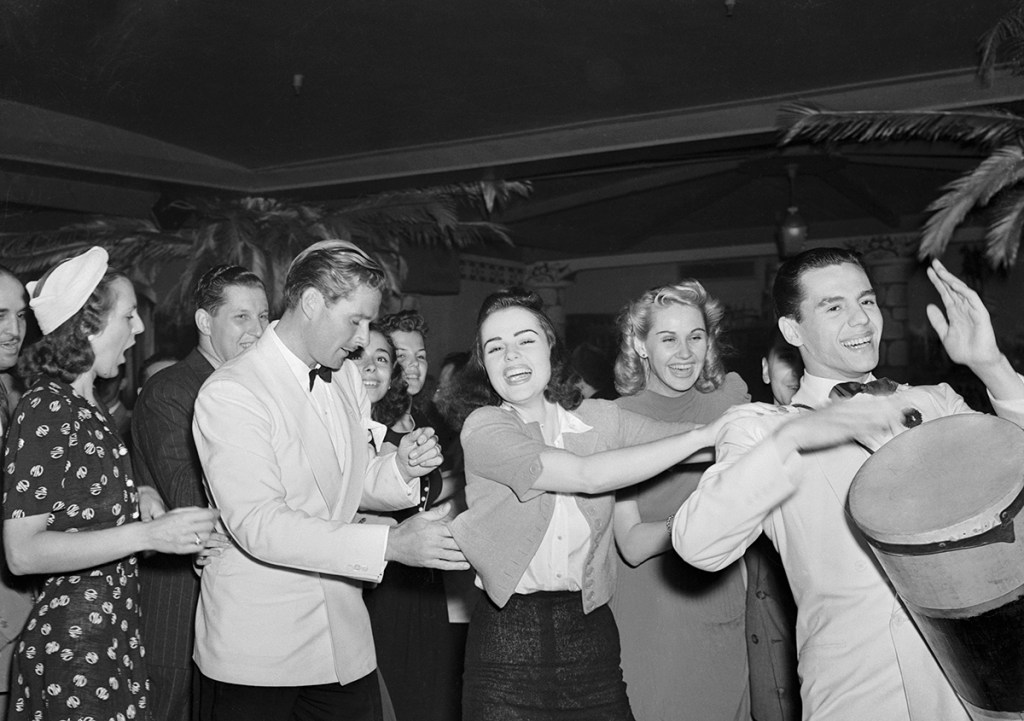
WW: Is it true that Desi is also credited with introducing a conga line to America while at the same time beating the conga drum?
GEOFFREY MARK: The conga drum isn’t just shaped the way it’s shaped because of the sound it makes. It’s very phallic and a man beating on it and perspiring gives you the phallic allusion you’re looking for. Society women went crazy for him, and Desi would literally lead a conga line out of his own nightclub, go to other night clubs and beat the conga through the place, taking people with him.
He’d go to two or three clubs and come back to his own, and now there’s, like, 50 more people there, so the clubs loved him. One of the other people who loved him was Larry Hart of Rodgers and Hart.
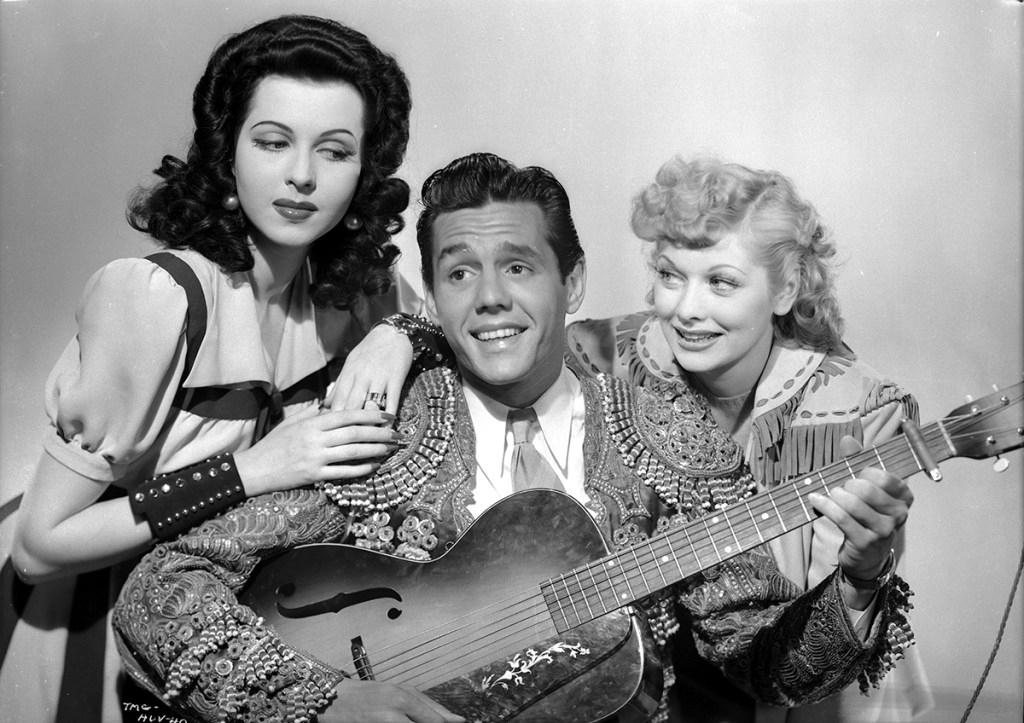
WW: Now they were the writers behind the musical Too Many Girls, which later became a film, right?
GEOFFREY MARK: Yes. He auditioned and got the part. They found that he was funny as well as handsome. That he was dynamite on stage, even more than in a nightclub, and the show was an enormous hit. RKO bought the rights, George Abbott directed it and it really help Desi become a star.
The movie version was released in 1940 and they took almost everybody from the stage version to Hollywood, except the leading lady, whose husband wouldn’t let her go. And they replaced the leading lady with an RKO star, who at this point was starring in B movies for them. Her name was Lucille Ball.
WW: Is this the moment where we say, “The rest is history?”
GEOFFREY MARK: Lucille was in a film called Dance, Girl, Dance and was shooting it when Desi saw her for the first time at the commissary at RKO, and she was in makeup that made it look as though she’d just been beaten up. Desi didn’t know that; he didn’t know films. He just assumed this was a beaten-up girl. Well, he saw her again without the makeup and went, ‘What a woman!’ He asked her out using the line — and they made fun of it on I Love Lucy — ‘Do you know how to rumba?’ and she told him, ‘No.’
Of course she knew how to rumba. She was a movie star. It was a musical. She knew how to rumba. It was immediate for them; they danced, lives changed and history changed. And they began to date very seriously. Miss Ball was engaged to a director, Alexander Hall, and Desi had a girlfriend back east, and they just dumped them both and became exclusive.
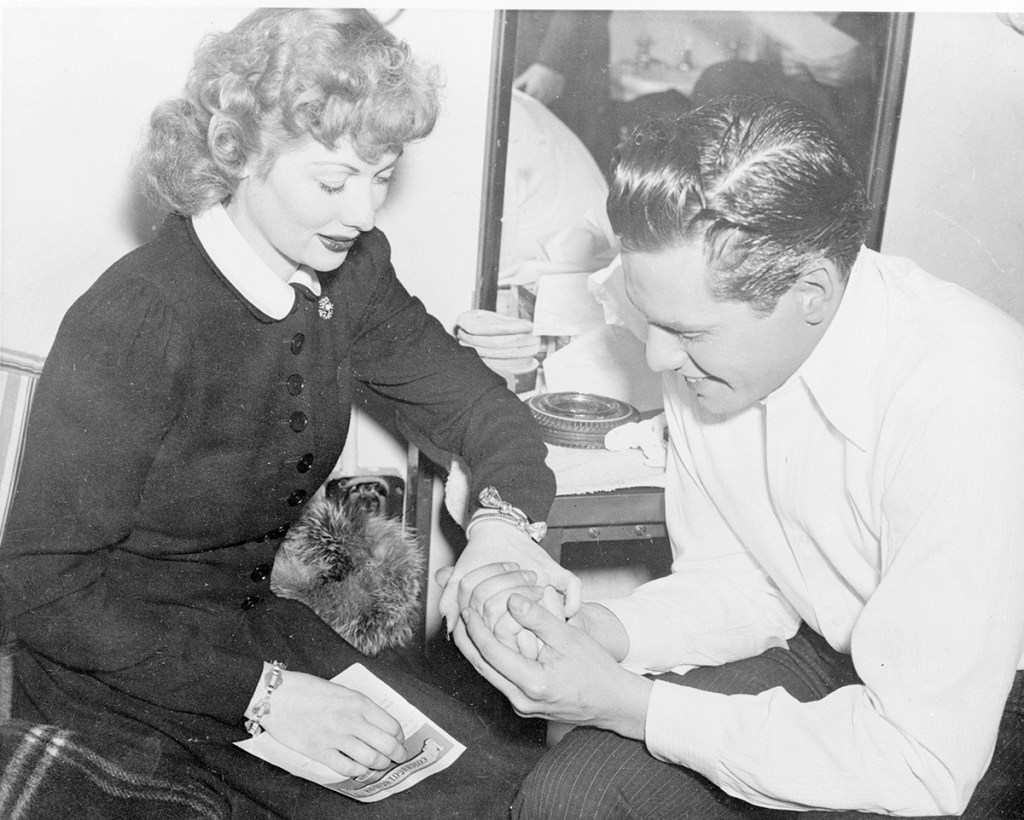
Desi wanted them to get married right away, but she was in no rush, being all about her career — but she did love Desi very much. They finished the film and Desi went back east to play clubs again and Miss Ball went east supposedly to promote Dance, Girl, Dance, and there’s a very funny story that accompanies that.
A newspaper columnist, and not a stupid one, came to her suite to interview her. They spent about an hour on the terrace of the place she was in, and as this columnist was leaving, she said, ‘By the way, I know that Desi’s in the bathroom. Why don’t you ask him to come out and say hello?’
Lucille started to laugh and Desi came out, and, unfortunately, his fly was open, revealing quite a bit. Lucille quipped, ‘Desi believes in free advertising.’ It’s a story he tells in his own book. They got married at the Byram River Beagle Club in Greenwich, Connecticut.
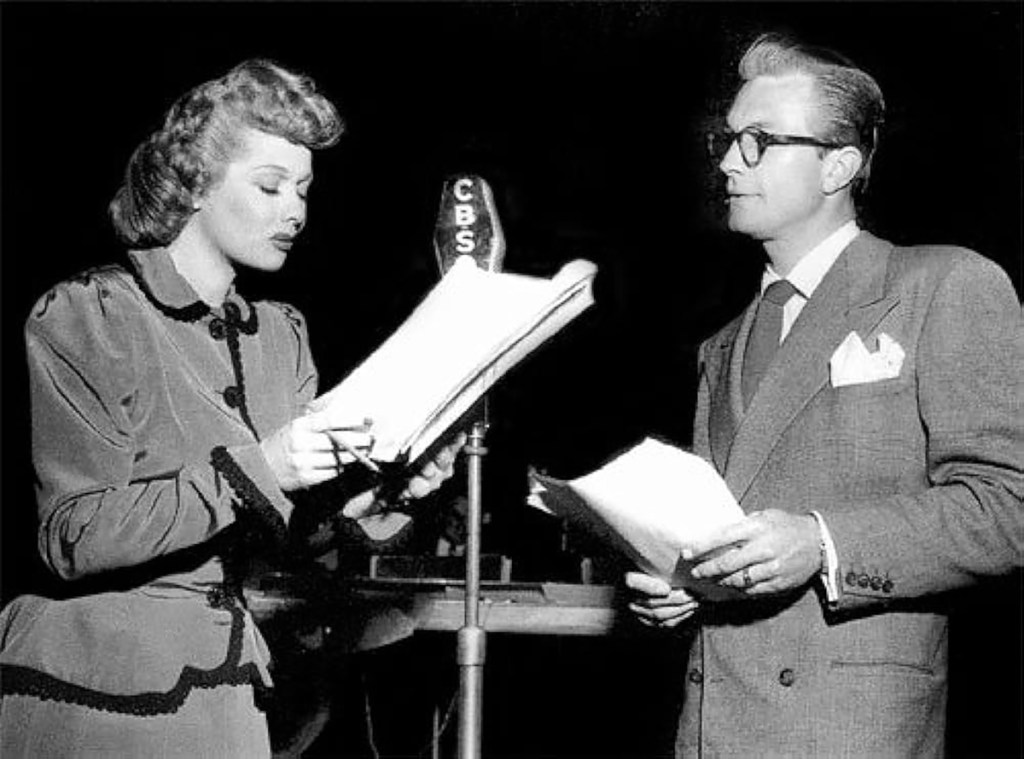
WW: They spent the next 15 years in Chatsworth, California. What happened with their careers and did it have an impact on their relationship?
GEOFFREY MARK: MGM took her away from RKO and made her a big movie star. And Desi was with his orchestra. He also made a few films, and even though the films weren’t necessarily good, he was good in them. The problem is that they didn’t know what to do with him, because his accent was so thick and he wouldn’t lose it.
He felt such a loyalty to his home country. I mean, he became an American citizen and loved what this country did for him, but Cuba was always in his heart and he didn’t want to lose his accent and become more American in that way. He fought it. And then he got drafted in the American Army doing shows. He didn’t fight, he didn’t go overseas. He was in California, but they were separated.”
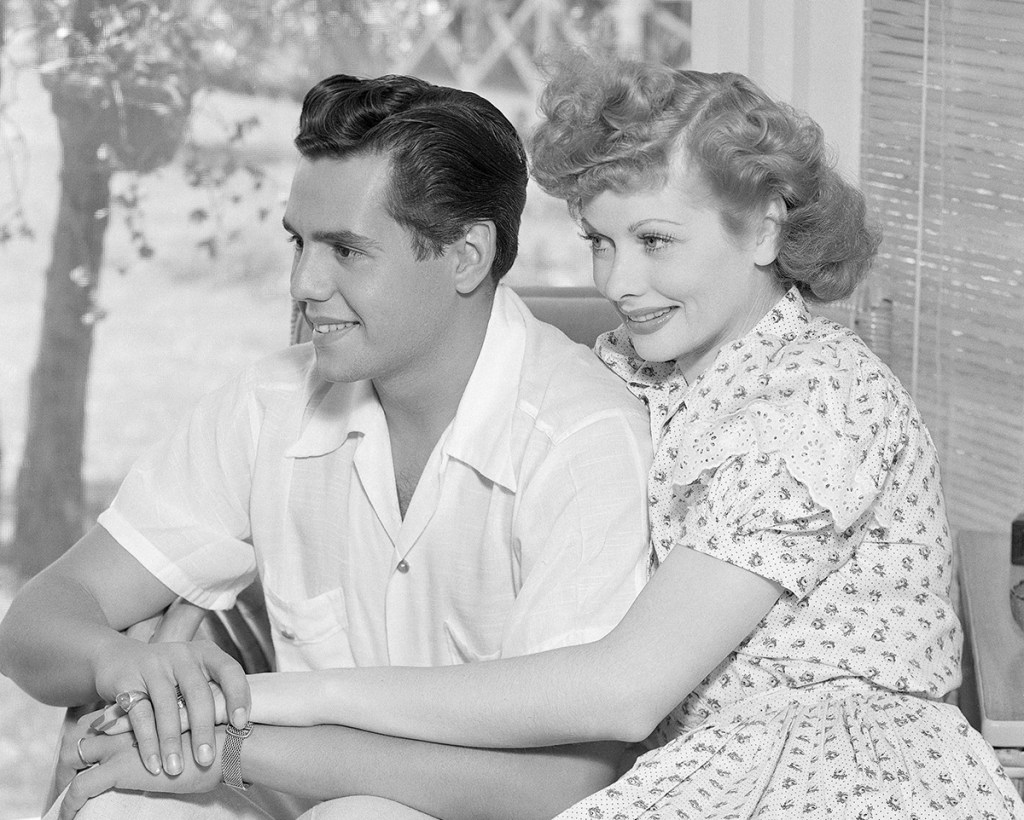
WW: During this time, Lucille began starring in her radio sitcom My Favorite Husband, which was, in essence, a dry run for I Love Lucy in many ways.
GEOFFREY MARK: The names of the characters are different and the husband is white bread, but it’s an unfulfilled wife, her short-tempered husband and an older couple goading them both on to stand up for themselves. That’s really, I Love Lucy. She started the show in 1948, and it wasn’t long before CBS expressed interest in bringing the concept to television with Ms. Ball starring. So much has been written about this that is wrong. Things like her career was over and she needed this show … She needed nothing.
She’d just made a comedy with Bob Hope that was the biggest selling comedy Paramount had ever made. Her star was doing just fine at this point, but she wanted time with her husband. She said, ‘If you’ll put Desi in as the husband, I will transfer My Favorite Husband to television.’ Television in 1950 hardly existed. It was mostly an East Coast thing; there was no coaxial cable to bring the show live across the country.
It was shown in New York and then it was filmed on a special kind of camera to be shown in the midwest, and then two weeks later on the West Coast. That’s what television was back then. In any case, CBS said, ‘No, we cannot have a mixed marriage on television.’
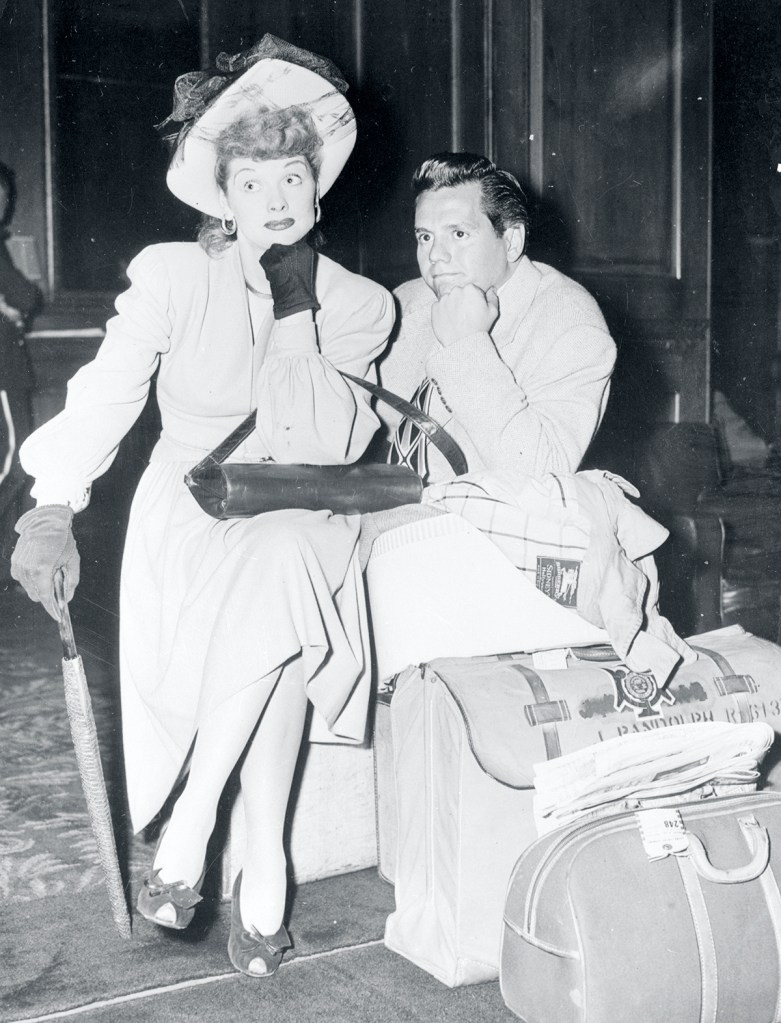
WW: Which is the point where they hit the road with a stage show featuring music and comedy that demonstrated to audiences how well they worked together.
GEOFFREY MARK: Some if it was written by her My Favorite Husband writers, who were the original I Love Lucy writers. Some of it was done for them by Desi’s friend Pepito the Clown, who also appeared on I Love Lucy with them. Around that time, Lucille finally got pregnant and they shot a closed circuit pilot for I Love Lucy just for CBS to make a Kinescope and see if they could sell it. She was beach ball pregnant.
They don’t mention it in the show, and there’s no Fred and Ethel, just Lucy, Ricky, the agent and Pepito the Clown. Philip Morris, the cigarette company, bought it. Lucille was almost ready to give birth to Lucie Arnaz and they called and said, “When are you guys moving to New York to do the show?”
Desi said, “New York? Why can’t we do the show here?” They said, ‘We’ve seen Miss Ball’s films. We’ve seen her do My Favorite Husband. She comes alive in front of a live audience.’ So Desi said, ‘Why can’t we film the show in front of a live audience?’ The only television show that had been done that way was Groucho Marx’s You Bet Your Life, but it was a game show. It wasn’t multi-set and was done in a theater, not on a sound stage.
Now that — doing the show that way — was Desi’s idea. Did he make that happen personally? No. One hundred of the sharpest, most talented people in show business joined the bandwagon to make I Love Lucy happen.
MUST-READ: Behind-the-Scenes Secrets of the 10 Funniest I Love Lucy Episodes
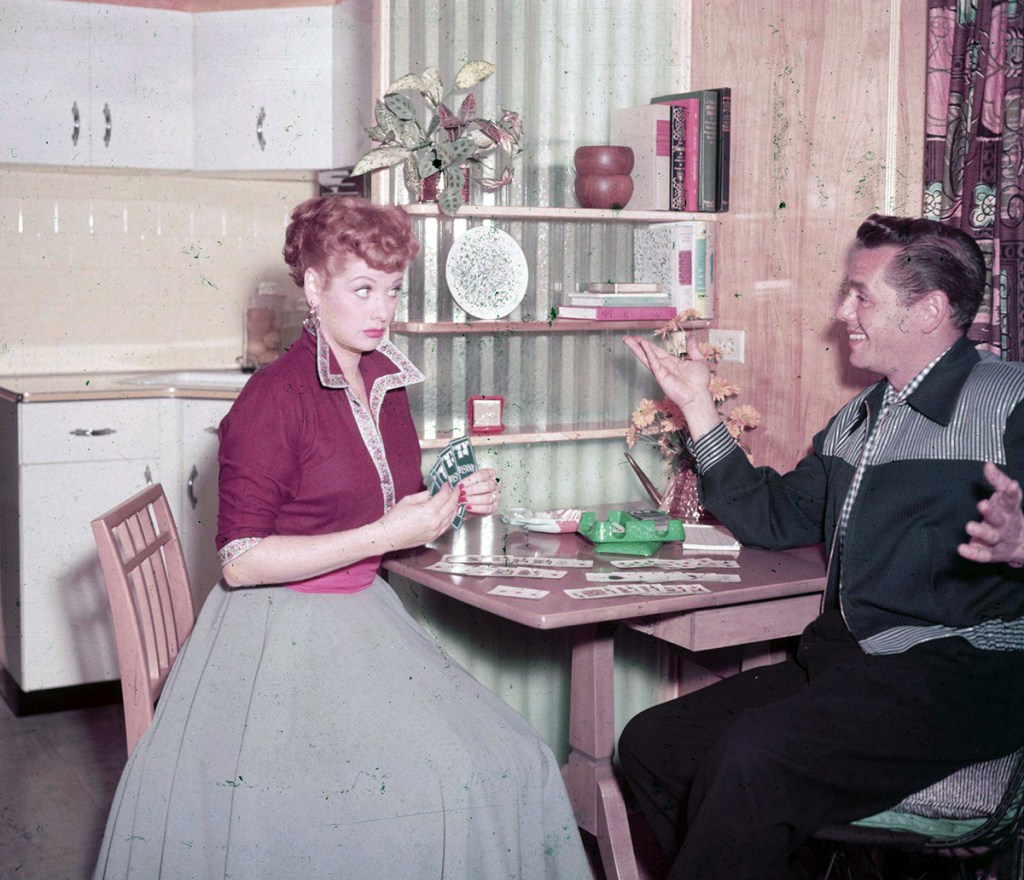
WW: The times were more conservative in terms of production. Did CBS freak out over the potential cost of doing the show this way?
GEOFFREY MARK: Desi made a deal that he and Lucille would take lower salaries, but in exchange they would own the show after one viewing of each episode. Nobody had ever heard of a rerun up until that point, so CBS figured they were getting off cheap. Radio and early television worked on the same premise. You had a show that went on for 39 weeks and then it went off the air for 11 to 13 weeks and another show replaced it, giving the audience a chance to miss the show and creative people weeks off to catch their breath and come up with new ideas and be fresh.
That’s what television was. You didn’t rerun anything. First of all, it was live, so there was no way to rerun anything. But because I Love Lucy was on film, it could be shipped all over the country and shown at the same time, so you didn’t need a coaxial cable. Everyone could show the same episode the same evening at whatever their version of Monday 9:00 Eastern Standard Time was. All over the country, people could see it at the same time.
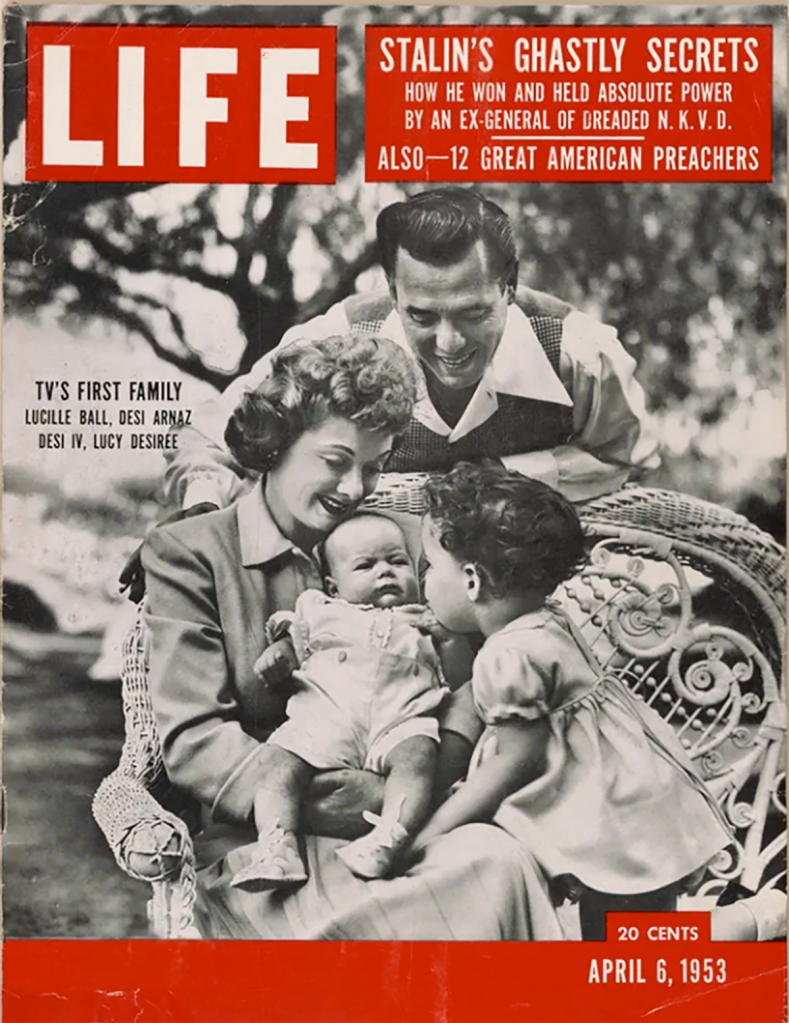
WW: So, the show’s a big hit right out of the gate, but in the middle of Season 2, the couple are pregnant again. It’s well known they hid the first pregnancy while they were shooting the pilot, but was it a challenge handling the new pregnancy at this point in the show’s history?
GEOFFREY MARK: Jess Oppenheimer said, “That’s great. Lucy Ricardo will become pregnant, too. It will give us a new storylines.” They wrote beautiful, well thought-out, respectful storylines about what a couple goes through during a pregnancy. And it changed America, because women used to go into seclusion.
It was almost considered naughty to see a pregnant woman, because that means she had sex, and nobody has sex, right? What’s funny is Lucy and Ricky had one big bed until the week she’s pregnant. Then, vavoom, two separate beds so that nobody could figure out how she got that way.
Well, they broke so much ground. The whole country was waiting for that baby to be born. By this time, Desi is executive producer of the show, and because Miss Ball had had a caesarian section with Lucie, you knew in advance when she would be giving birth. You could actually pick the day it happens. So they happened to pick January 19, the same day that Lucy Ricardo goes to the hospital to have the baby, which was a publicity gold mine. In the script, irrespective of what kind of child Lucille and Desi had, Lucy and Ricky were going to have a boy so that little Lucie wouldn’t get confused about who’s what.
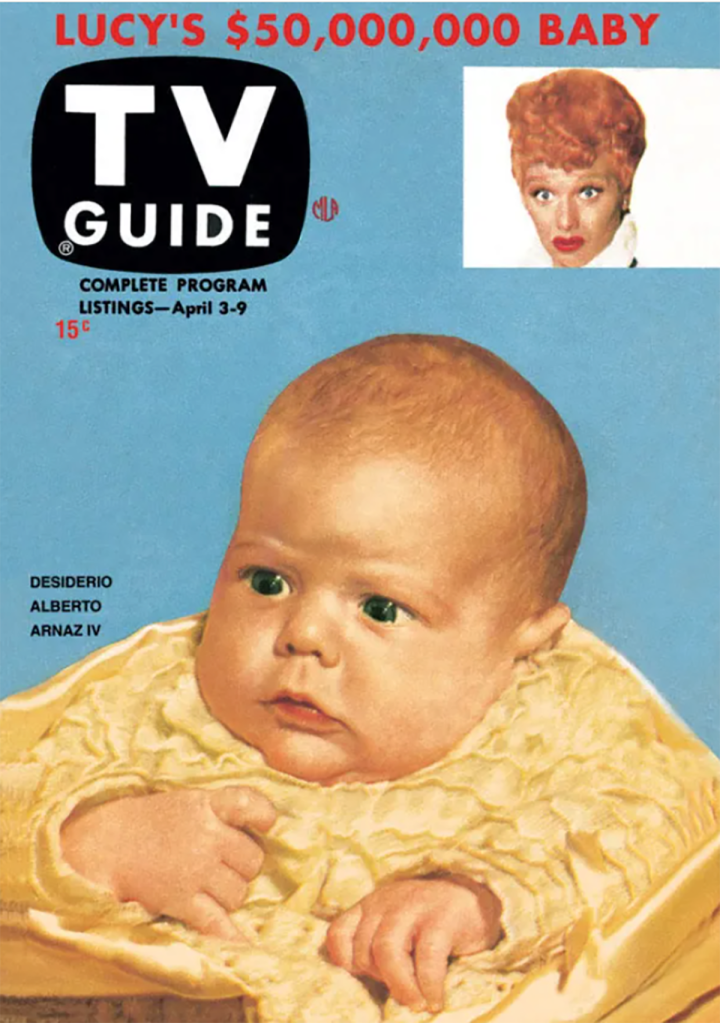
WW: From today’s vantage point, people wouldn’t realize what a pop culture event this really was.
GEOFFREY MARK: The publicity from it was so large that even though Eisenhower was inaugurated the next day as president, that was not the headline on any newspaper in the country. Lucy has her baby was the headline, and then down lower on the page was the Eisenhower inauguration. That’s how big this was.
WW: The show runs for six seasons, and then they do 13 episodes of The Lucille Ball-Desi Arnaz Show. They’re producing other shows and decide to really get into producing by selling the rights to I Love Lucy back to CBS and with the money buy RKO Studios, located next door to Paramount Pictures.
GEOFFREY MARK: Desilu became the largest producer of television product around. There was hardly a night you didn’t see Desilu product on television, and if they didn’t produce it, they got credit for it being filmed at Desilu. Over the years Desilu would produce shows like The Untouchables, Make Room for Daddy, Our Miss Brooks, Star Trek, Mission: Impossible and Mannix.
One thing you have to keep in mind is that Desi ran the studio, Miss Ball did not — until she became the president later. Desi made the business deals, Desi made them financially independent. She loved the sandbox and having her own playpen in which to play and do anything she wanted to, but it was Desi that put the playpen there and ran it.
He does not get enough credit for Desilu Studios. He also served as host and producer of the anthology series Westinghouse Desilu Playhouse, and spun off from it were The Untouchables and The Twilight Zone. In that time, eight more of the hour-long I Love Lucy shows were made, Lucille and Desi also appeared on The Danny Thomas Show and a Milton Berle special playing Lucy and Ricky, and Lucille played Lucy Ricardo on an episode of the Ann Sothern Show, all produced by Desi Arnaz (who also directed the Berle special).
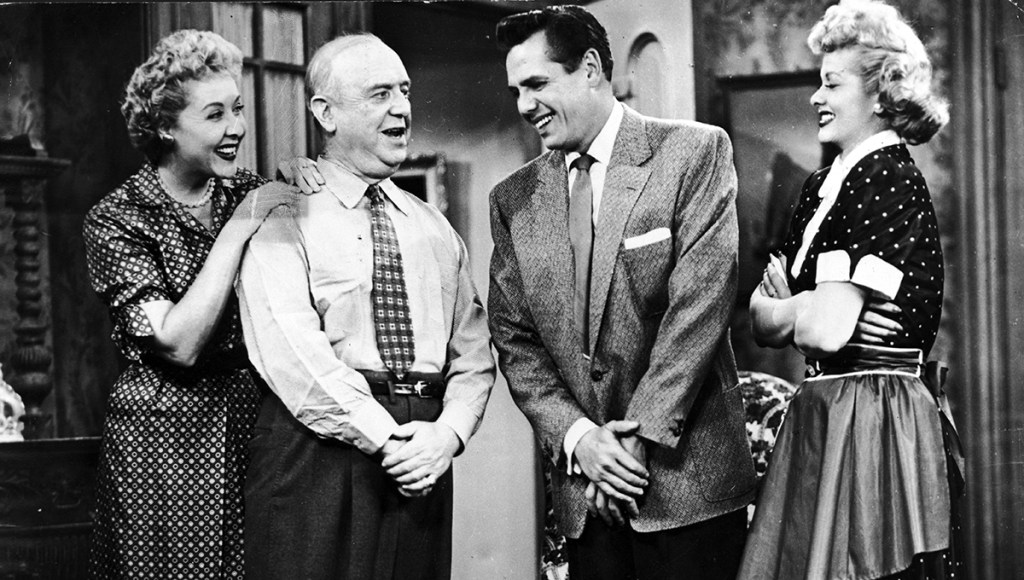
WW: But everything changed in 1960, particularly due to the fact that the marriage fell apart.
GEOFFREY MARK: Desi, unfortunately, had the disease of alcoholism. So does the man you’re talking to, so I am now talking as an expert on alcoholism. It is a disease. It is not a weakness of character, it is not a shameful thing, it is not evil. It’s a disease like cancer and there is no cure for it, but it can be put into permanent remission. Eventually, many years later, Mr. Arnaz put it into remission and good for him. I am proud of him for that, but in 1960 he wasn’t ready.
On top of this, the alcoholism and the background from which he came did not serve monogamy very well. That being said, Mr. Arnaz, I will swear on this, would never have purposely hurt Miss Ball for anything. He adored her, he was deeply in love with her, so any behavior that was hurtful, he either didn’t understand that it was hurtful or it was the alcoholism. I’m not saying he didn’t hurt her. And whatever her part in this was, she didn’t mean to hurt him either. But they got divorced, mostly because she felt it was hurting the children.
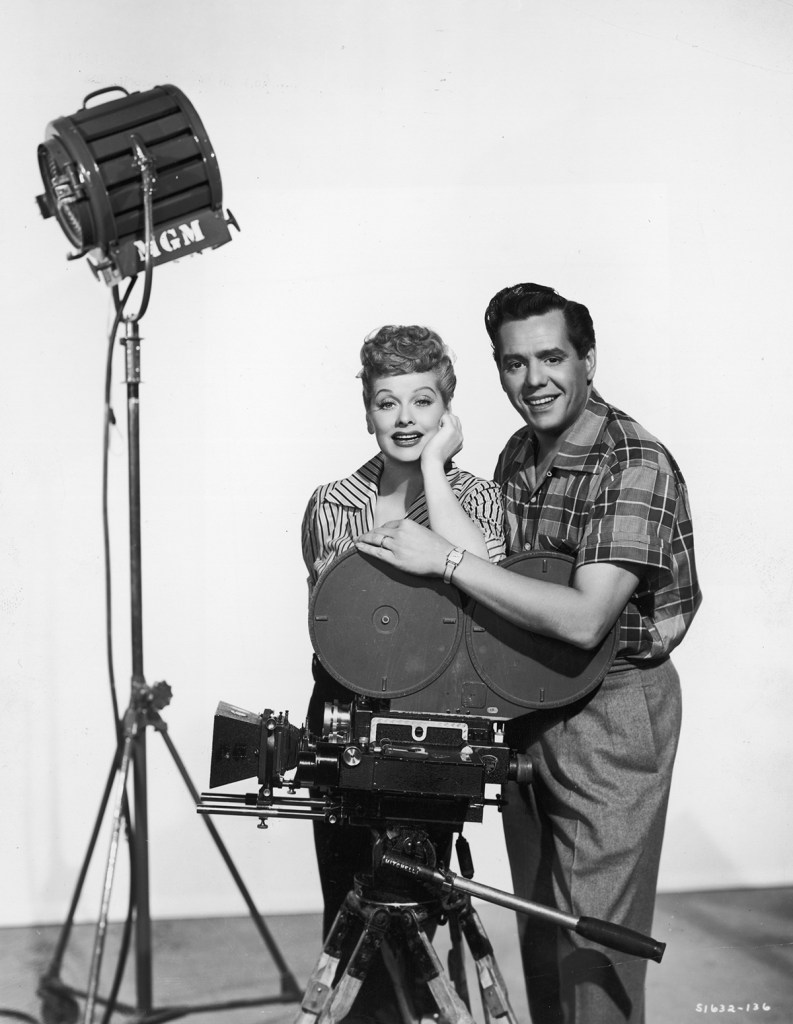
WW: And as a result of the divorce, based on the contract between them, she was able to buy out Desilu and the studio. But was there much left to it at that point?
GEOFFREY MARK: Desilu was floundering. It was no longer the huge production place it had been just a few years earlier. Pretty much it was one or two shows and renting itself out for other people, but not owning the shows. It was because of Desi’s problem with leadership, because of his disease, and changing times in television once again. The sitcom was out, which was Desilu’s staple. We were having a Western craze on television and although Desilu made Westerns, it wasn’t their cup of tea. Television was in transition.
In 1962, Ms. Ball came back to television with The Lucy Show, playing a similar character to Lucy Ricardo, with Desi serving as executive producer for a time, though it was becoming harder for them to be on the set together every day. There’s a wonderful quote about Desi and Vivian Vance being up on the lighting catwalks looking down on a rehearsal, and Vivian saying, ‘It just isn’t the same, Desi, is it?’ Because Vivian had gotten divorced and remarried, Lucille had gotten remarried to Gary Morton and Desi would get remarried two years later. But at this point he was single and Miss Ball invoked the contract and bought Desi out.
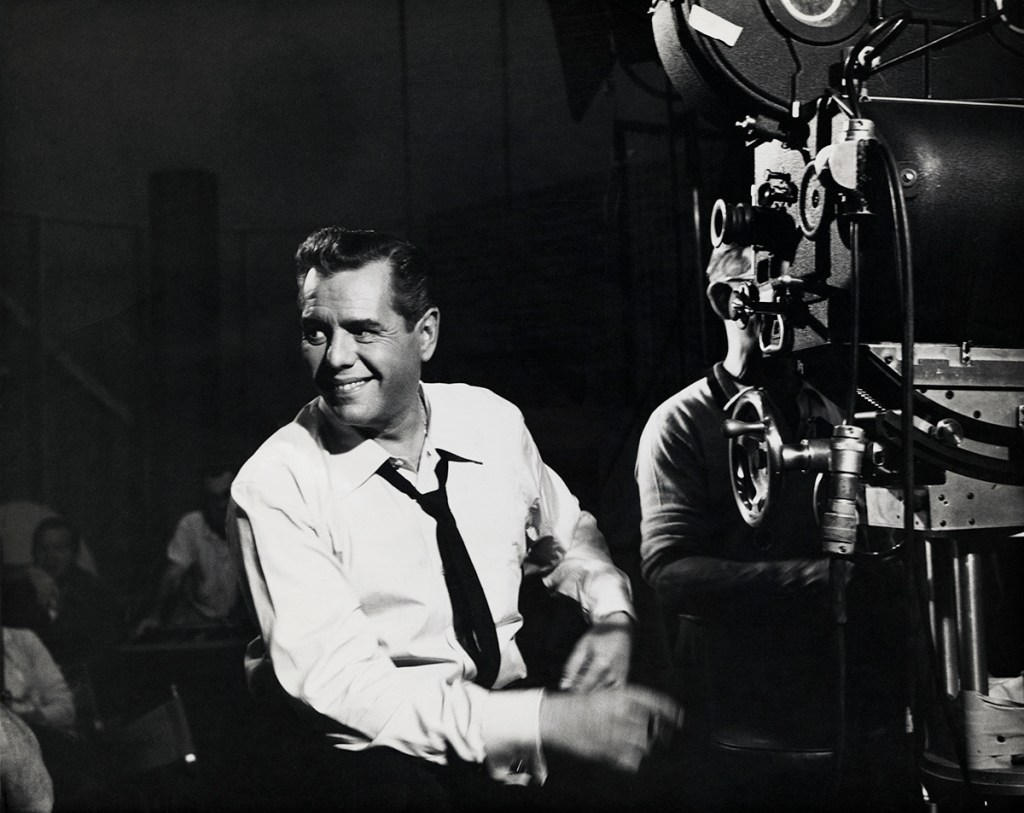
Desi kind of dropped out of sight for the most part. He married a lovely woman named Edith Hirsch that Lucille and Desi knew from Del Mar Racetrack. She was a beautiful redhead and a good wife to him. They were married until she passed away in 1985. And Lucille was friendly with her, and Desi played golf with Gary Morton.
I’m not saying everybody loved everybody, but everybody was there for each other and for the children. And then Desi decided around 1966 that he wanted to get his feet wet again and be creative, so he started Desi Arnaz Productions. He produced several television pilots that did not sell, and one that did, called The Mothers-in-Law. After that, he did some variety show work, but it was spotty. He was spending more time in his personal life. In the mid-‘70s he wrote his autobiography, A Book.
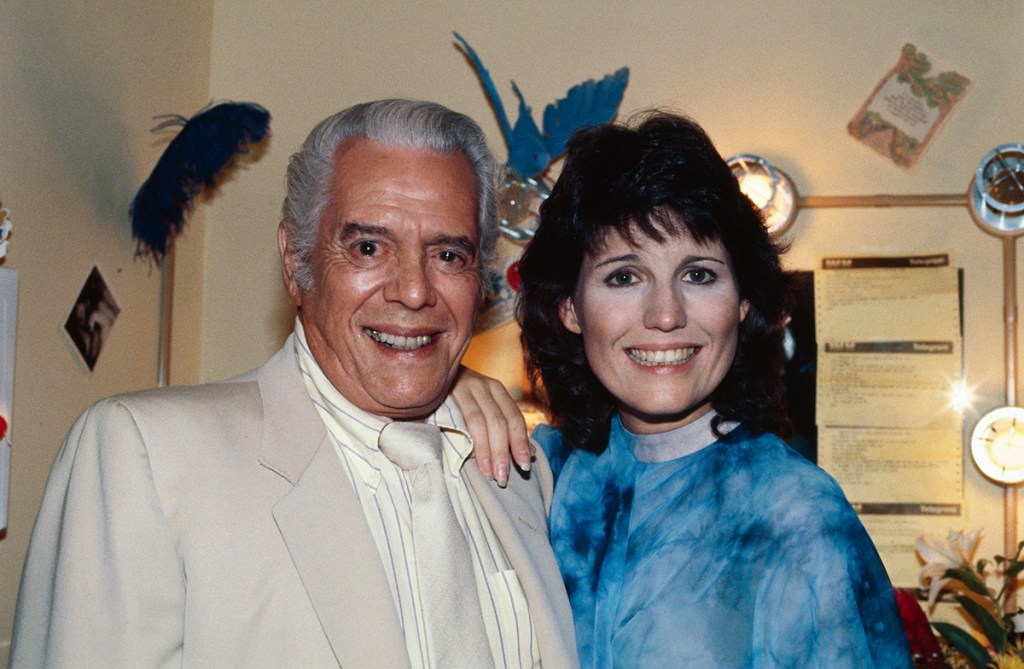
WW: After the divorce, what was Desi’s relationship with his kids like?
GEOFFREY MARK: His children have told me he was a good, loving, devoted father who taught them to have joy in life. When his children joined Here’s Lucy, any time there was a musical number or something really, really special, he was in the audience cheering them on. He worked with his kids on the Kraft Music Hall and he did some live things with them.
When Desi, Jr. developed his own addiction issues, his father was there for him. His father went in with him and said, ‘All right, we’ll do this together. We’ll both get better.’ How’s that for a father? I have spoken to hundreds of people and, with the exception of one or two, have not heard a negative word about Desi.
I was told again and again that he was the most brilliant, tasteful, hard-working, generous of time and money and spirit boss and friend you could want when he wasn’t battling the alcoholism. The thing to remember is that he was friends with Miss Ball until he died and he was there for his children until he died.
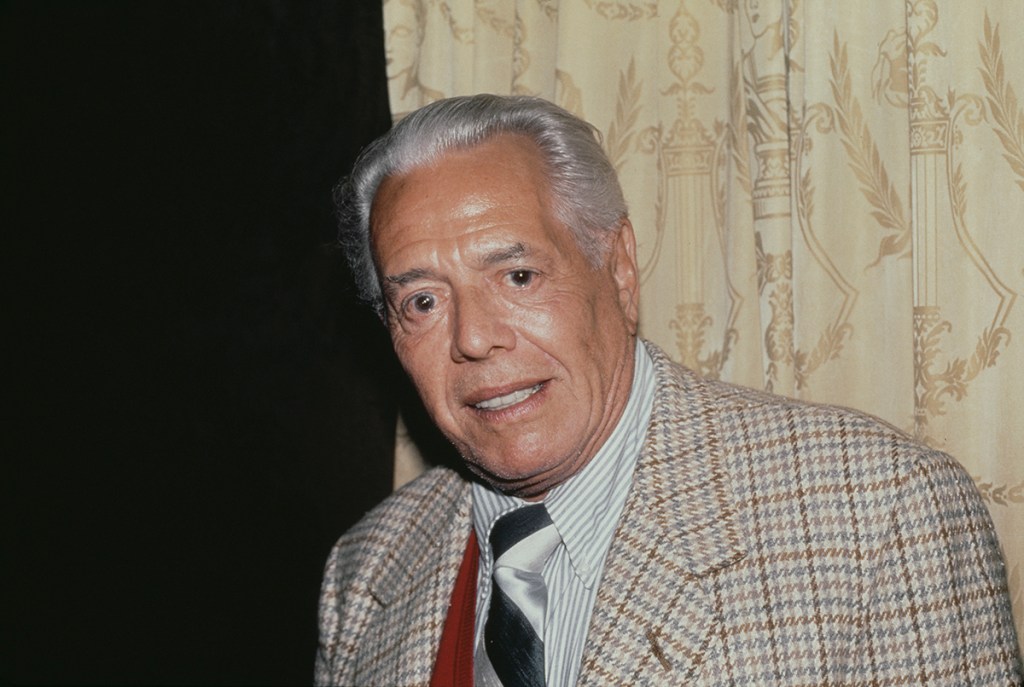
WW: Which happened on December 2, 1986 from lung cancer. Any final thoughts on Desi Arnaz?
GEOFFREY MARK: I think everyone reading this can learn from Desi Arnaz to take joy in life while you can. Don’t put joy off. Every day find something about which to be joyful. That’s how you have a happy life, and he did. In his worse days, he did that.
And in his best days, he shone like a star, because he loved his life. He loved what he did, he loved his children. He loved to cook — not many people know he was a great cook. For all of these things, he wasn’t just Lucille Ball’s husband who lucked into a part on I Love Lucy, because she demanded it. He was so much more than that.
Continue going behind the scenes on classic TV shows and their stars












